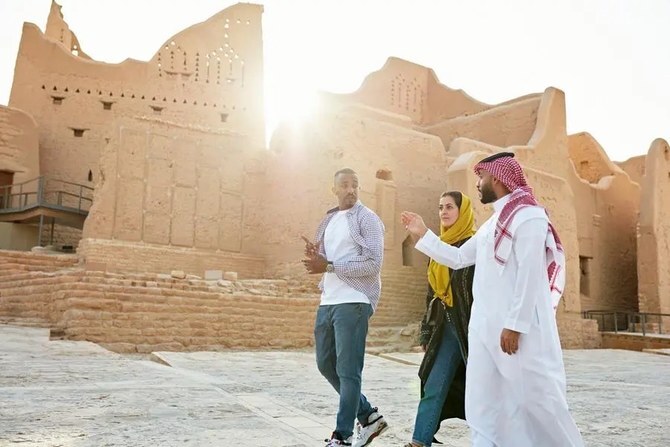Saudi Arabia tourism growth is making headlines worldwide after the kingdom reported an astonishing 73% surge in international arrivals, placing it at the very top of the G20 countries. Once a country known primarily for its oil wealth and religious pilgrimages, Saudi Arabia is now rebranding itself as one of the world’s fastest-growing travel destinations. This dramatic rise not only highlights its ambitious Vision 2030 reform agenda but also signals a seismic shift in global tourism dynamics.
Saudi Arabia’s tourism revolution: From desert kingdom to global hub
For decades, Saudi Arabia was associated almost exclusively with oil exports, conservative traditions, and religious pilgrimages to Mecca and Medina. Tourism was largely limited to Hajj and Umrah, with strict rules preventing recreational visitors from exploring the country freely.
But with the launch of Vision 2030, Crown Prince Mohammed bin Salman unveiled a bold plan to diversify the economy, reduce dependency on oil, and open the kingdom to the world. Tourism became a central pillar of this transformation.
The latest figures showing 73% growth in tourism prove that these policies are working, and perhaps even exceeding expectations.
What drives Saudi Arabia tourism growth?
Several key factors have contributed to this record-breaking surge:
- Eased visa policies
- The introduction of the eVisa in 2019 allowed travelers from over 60 countries to enter with minimal paperwork.
- Recent expansions now include more countries, encouraging millions of first-time visitors.
- Massive investments in mega-projects
- Projects like NEOM, The Red Sea Project, AlUla, and Qiddiya have attracted global attention.
- These futuristic destinations mix luxury, sustainability, and cultural experiences, offering something unique compared to traditional hotspots.
- Focus on entertainment and events
- The kingdom is hosting international concerts, Formula 1 races, film festivals, and even eSports competitions.
- These events not only boost tourism but also reshape global perceptions of Saudi Arabia.
- Religious tourism expansion
- With millions already visiting for Hajj and Umrah, the government is improving infrastructure and creating leisure packages that extend visits beyond pilgrimage.
- Aggressive global marketing
- The Saudi Tourism Authority has launched campaigns in Europe, Asia, and the US, positioning the kingdom as a modern, safe, and diverse destination.
How Saudi Arabia compares with G20 peers
According to UN Tourism, Saudi Arabia’s 73% increase in international arrivals places it as the fastest-growing tourism destination in the G20.
- Saudi Arabia: +73%
- Italy: +35%
- Mexico: +25%
- Turkey: +20%
- Japan: +18%
While traditional tourism leaders like France, Spain, and the US continue to attract large numbers, none matched the speed of Saudi Arabia’s growth in 2024.
This positions the kingdom not just as a regional hub but as a serious contender in the global tourism race.
Tourism’s impact on Saudi Arabia’s economy
Tourism has quickly become a major driver of non-oil revenues for the kingdom.
- In 2024, Saudi Arabia recorded over 100 million tourists, both domestic and international.
- The sector now contributes nearly 4.5% of GDP, with expectations to rise to 10% by 2030.
- New jobs are being created at a rapid pace, with the government targeting 1 million tourism jobs by 2030.
This is not just about boosting the economy—it’s also about reshaping Saudi society, introducing more cultural openness, and positioning the country as a meeting point for East and West.
Spotlight on Saudi Arabia’s mega-projects
Saudi Arabia tourism growth is closely tied to its ambitious mega-projects. These are more than attractions—they are symbols of national transformation.
- NEOM: A $500 billion futuristic city powered by renewable energy, featuring The Line, an urban development stretching 170 km.
- The Red Sea Project: A luxury eco-tourism hub with islands, resorts, and coral reef conservation.
- AlUla: A UNESCO heritage site showcasing ancient Nabataean ruins, marketed as Saudi Arabia’s Petra.
- Qiddiya: A massive entertainment hub with theme parks, motorsport arenas, and cultural venues.
These projects are redefining what Saudi Arabia represents to the outside world.
Challenges facing Saudi Arabia’s tourism growth
Despite the record-breaking figures, challenges remain:
- Perceptions and human rights concerns: Critics argue that tourism growth may be overshadowed by international concerns over freedom of expression and rights issues.
- Regional instability: Ongoing conflicts in the Middle East could impact investor confidence and visitor safety.
- Sustainability: Mega-projects raise questions about environmental impact in fragile desert ecosystems.
- Cultural balance: Balancing rapid modernization with deeply rooted traditions continues to be a delicate task.
The government acknowledges these challenges and insists that sustainability, cultural preservation, and openness remain at the heart of Vision 2030.
The future of Saudi Arabia tourism growth
Looking ahead, the kingdom has set ambitious targets:
- 150 million tourists annually by 2030
- $100 billion annual tourism revenue
- Becoming a top 10 global tourist destination
If the current pace continues, Saudi Arabia may well exceed these targets.
Global airlines are adding direct flights to Riyadh and Jeddah, hotel giants are investing billions, and major travel influencers are showcasing Saudi destinations to millions online.
Saudi Arabia tourism growth is no longer a future promise—it’s happening now.
Conclusion: A new era for global tourism
The 73% surge in Saudi Arabia tourism growth marks a turning point for the Gulf kingdom. From strict entry restrictions to futuristic mega-projects, Saudi Arabia has transformed itself into a global hotspot in just a few years.
While challenges remain, the momentum is undeniable. With Vision 2030 as its guide, Saudi Arabia is redefining what tourism looks like in the Gulf and positioning itself as a must-visit destination for the 21st century.
For the global travel industry, the message is clear: Saudi Arabia is not just opening its doors—it is reinventing them.
Do follow on : Instagram
Read More: Banking on the Future: How the UAE’s Financial Sector is Powering Economic Growth



